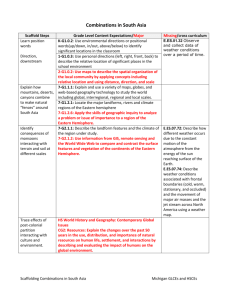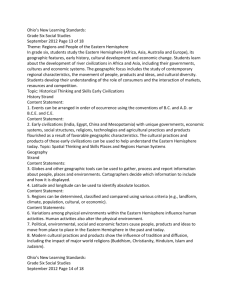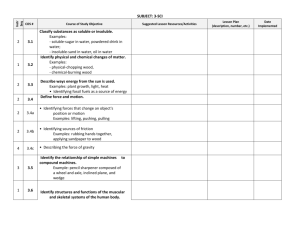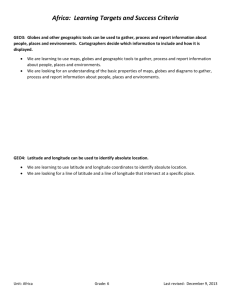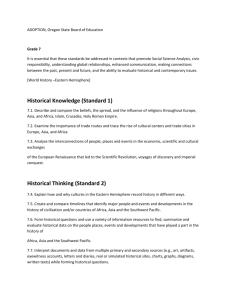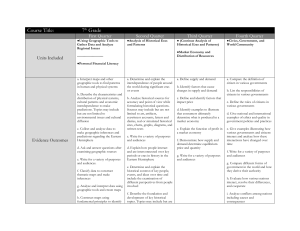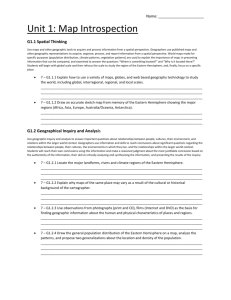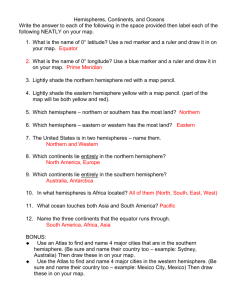Social Studies
advertisement
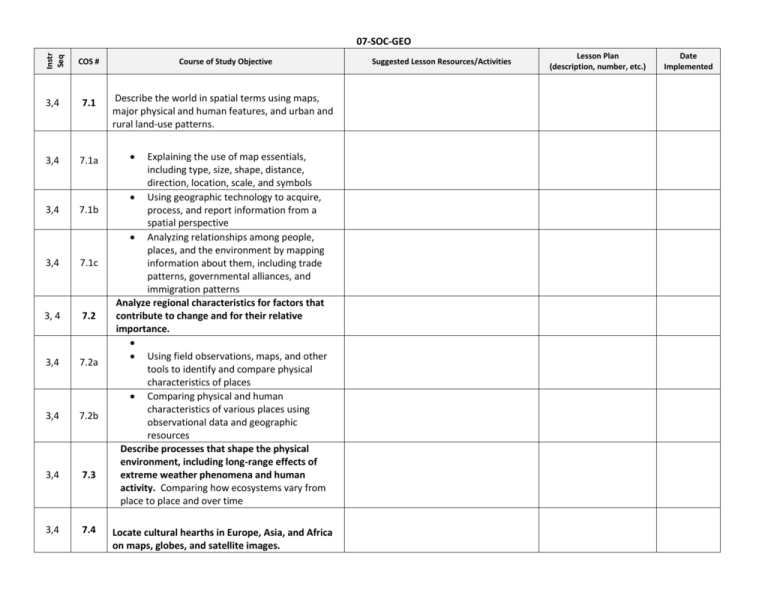
Instr Seq 07-SOC-GEO COS # 3,4 7.1 3,4 7.1a 3,4 7.1b 3,4 7.1c 3, 4 7.2 3,4 7.2a 3,4 7.2b 3,4 7.3 3,4 7.4 Course of Study Objective Describe the world in spatial terms using maps, major physical and human features, and urban and rural land-use patterns. Explaining the use of map essentials, including type, size, shape, distance, direction, location, scale, and symbols Using geographic technology to acquire, process, and report information from a spatial perspective Analyzing relationships among people, places, and the environment by mapping information about them, including trade patterns, governmental alliances, and immigration patterns Analyze regional characteristics for factors that contribute to change and for their relative importance. Using field observations, maps, and other tools to identify and compare physical characteristics of places Comparing physical and human characteristics of various places using observational data and geographic resources Describe processes that shape the physical environment, including long-range effects of extreme weather phenomena and human activity. Comparing how ecosystems vary from place to place and over time Locate cultural hearths in Europe, Asia, and Africa on maps, globes, and satellite images. Suggested Lesson Resources/Activities Lesson Plan (description, number, etc.) Date Implemented Instr Seq 07-SOC-GEO COS # 3,4 7.4a 3,4 7.4b Course of Study Objective Describing physical and human characteristics used to define regions in the Eastern Hemisphere Relating place names to cultural and/or political perspectives Identify physical, economic, political, and cultural characteristics of selected regions in the Eastern Hemisphere, including Europe, Asia, and Africa. 3,4 7.5 3,4 7.6 3,4 7.7 3,4 7.8 3,4 7.9 3,4 7.10 3,4 7.11 Explain factors that contribute to conflict within and between countries of the Eastern Hemisphere. Describe historical and contemporary economic trade networks of regions in the Eastern Hemisphere based upon their geographic location and available resources. Describe positive and negative environmental effects of human actions on the four basic components of Earth’s physical systems: atmosphere, biosphere, lithosphere, and hydrosphere. Analyze environmental consequences of major technological changes in human history for both intended and unintended outcomes. Describe ways people in the Eastern Hemisphere prepare for natural hazards and disasters. Compare the distribution of natural resources in various parts of the world by mapping locations of major deposits. Suggested Lesson Resources/Activities Lesson Plan (description, number, etc.) Date Implemented Instr Seq 07-SOC-GEO COS # 3,4 7.11a 3,4 7.11b 3,4 7.12 3,4 7.12a Course of Study Objective Discussing the relationship between a country’s standard of living and its accessibility to natural resources Describe problems involved in balancing the impact of human habitation on the environment and the need for natural resources essential for sustaining human life. 3,4 7.12b 3,4 7.12c Relating the importance of energy resources to the development of human societies Assessing differing attitudes of people regarding the use and misuse of resources Predicting the future spatial organization of Earth if present conditions and patterns of consumption, problem-solving innovations, production, and rates of population growth and decline continue Applying a problem-solving model to a geographic issue, including the development of sound arguments for specific actions on the issue Suggested Lesson Resources/Activities Lesson Plan (description, number, etc.) Date Implemented



